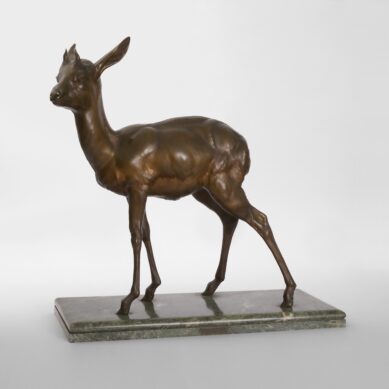You searched
Painter
Aleardo Terzi
Are you interested in the sales or the purchase of his artworks?
We buy works of this artist
and of other painters and sculptors from the 16th century to the first half of the 20th century
The Berardi gallery offers a free and without obligation service for evaluation of ancient and modern art . To find your way in the art market, very complex and full of nuances, it is better to rely on a professional consultant who can answer fast and concretely to your needs. The clarity of the answers will resolve effectively the need to estimate or sell an asset.
Contact us immediately without commitment
Answers also in 24 hours:
Aleardo Terzi
Aleardo Terzi
Aleardo Terzi was born in Palermo from the lithographer Andrea Terzi, his first teacher, who introduced him to the world of art. Aleardo soon became interested not only in drawing, but also in painting, decoration and engraving. After attending the Academy of Fine Arts in Palermo for a short time, he made his debut at the National Exhibition of the city in 1891, presenting the oil painting Moments of rest.
At the same time he deals with the illustration of the catalog of an ethnographic exhibition on Palermo and continues his graphic activity, collaborating as a cartoonist in “La Tribuna Illustrata”. From a pictorial point of view, in these early years, he is still very attached to a chromatic treatment inspired by Neapolitan realism, in particular by the language of Antonio Mancini.
But already in 1894, when he exhibited the Azalea painting at the “Exhibition among Sicilian artists”, his style was updated to the liberty requirements he had already adhered to in the illustrative field.
At the end of the nineties, he moved to Rome, working intensively for the Voghera publishing house and easily entering the Liberty cultural circle of the capital. However, he also often stays in Milan, because he illustrates various magazines and periodicals, including “Natura ed arte”, “Scena illustrata” and “Novissima”.
From a graphic point of view, Terzi seems to be influenced by Alphonse Mucha and Félix Vallotton, making Art Nouveau and formal synthesis his main language. The commissions follow one another and collaborate with the Ricordi Graphic Workshops and the Mele Warehouses, creating posters, posters, advertisements and musical booklets.
In 1903 he was able to update his style even more: he took a trip to England and became aware of William Morris’s Arts and Crafts project, taking inspiration from it for his graphic and painting activity.
A delicate liberty decorativism invades his illustration works, from advertisements to children’s storybooks. From a pictorial point of view, however, he approaches Divisionism, becoming one of the largest and most long-lived represented in Rome, together with Arturo Noci and Camillo Innocenti.
At the Roman Secession of 1913 he presented Summer Morning and Autumn Afternoon, accompanied by three illustrated tables. In 1914, however, he exhibited The woman with green stockings and Portrait, making the elegant woman of bourgeois extraction the main protagonist of his paintings.
Moments of leisure or personal care involve, in worldly environments, young girls or mature women, treated with a brushstroke divided into small close commas, with a fast and urgent rhythm and a masterful treatment of light.
At the third exhibition of the Secession he exhibited the elegant portrait 1914, Symphony in pink and two lithographs. His link with the Secession is very strong, so much so that he designs the furniture for several rooms and designs the decorative frieze for the international hall of the 1914 edition.
In the same years, he worked for Richard-Ginori ceramics, creating some decorations, also in collaboration with Duilio Cambellotti, with whom he forms a lasting friendship. He collaborates with fashion and costume companies, without however abandoning his pictorial activity: in 1921, at the Roman Biennale he presented the divisionist paintings Armonie vespertine, Nudo and In the mirror.
Two years later, he participated in the 1st Biennial of Decorative Arts in Monza, obtaining an award for a ceramic service. From 1925 to 1930 he was director of the Institute for the decoration and illustration of the book in Urbino and, more or less in the same years, he was among the illustrators of the Italian Encyclopedia.
Aleardo Terzi’s activity in the field of graphics continued throughout the 1930s, dealing with sets, theatrical costumes, covers and illustrations of children’s books. He died in Castelletto Ticino near Novara in 1943.





